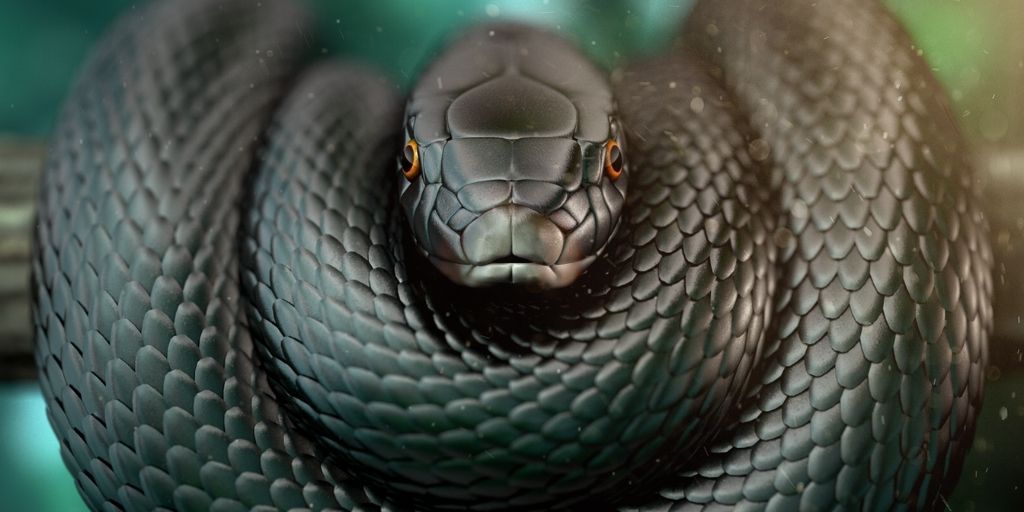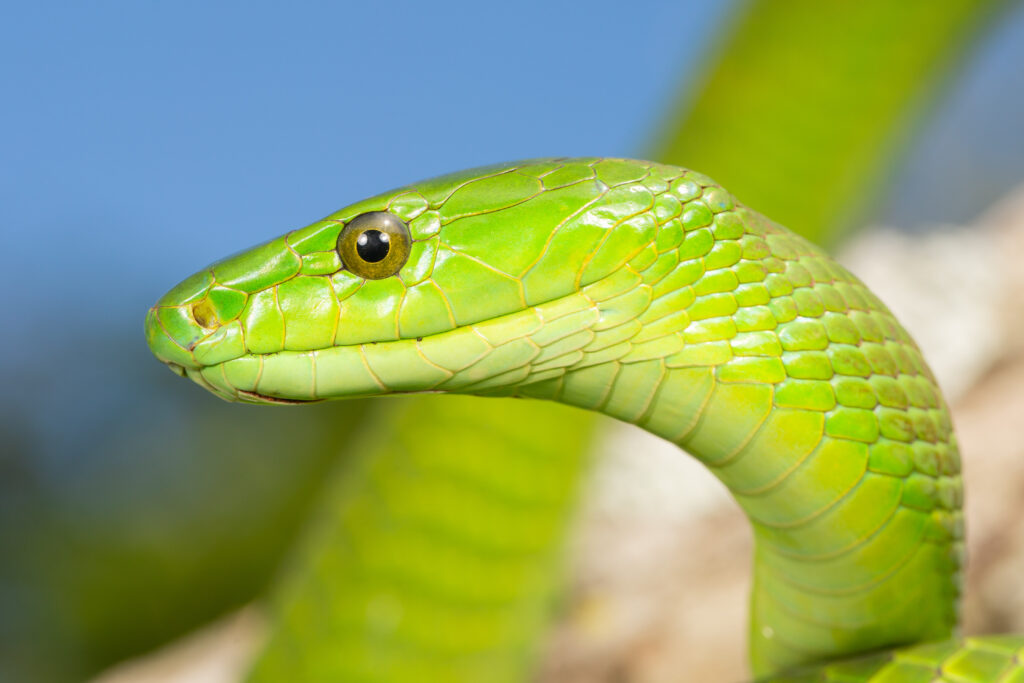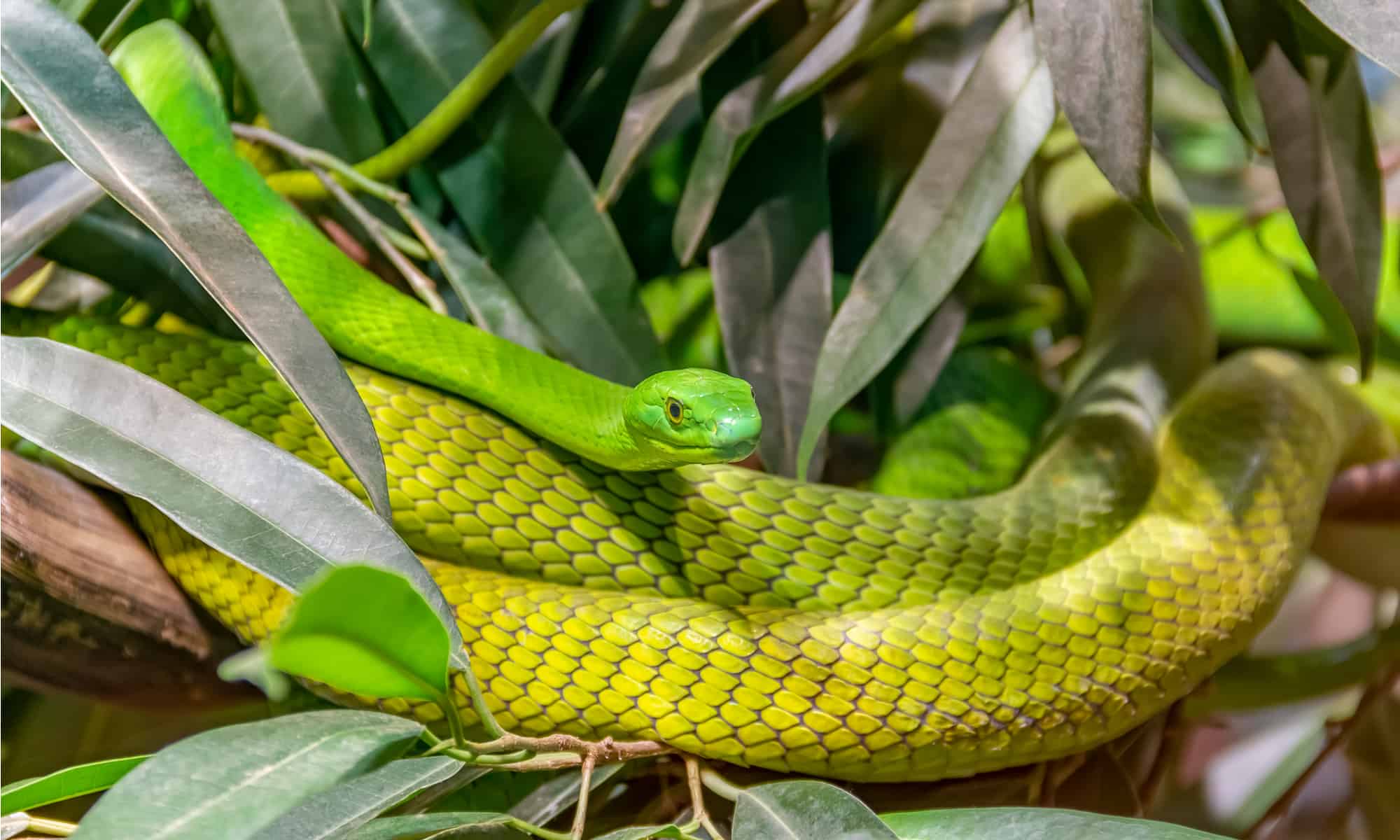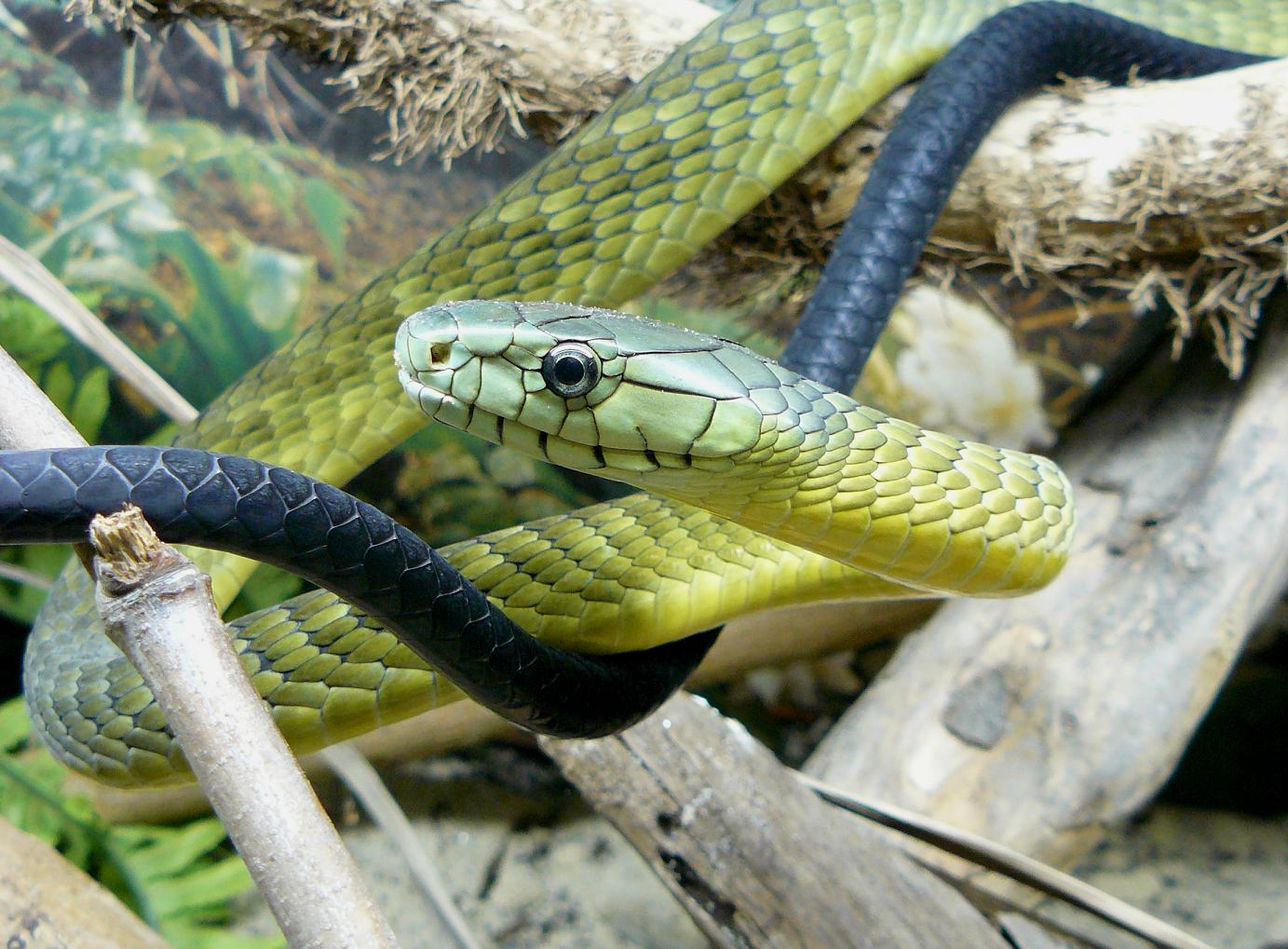Mambas are a group of highly venomous snakes that belong to the Dendroaspis genus. There are four species of mambas, all of which are native to sub-Saharan Africa. These snakes are known for their speed, agility, and potent venom, which can cause death within hours if left untreated.
The four types of mambas are the black mamba, eastern green mamba, western green mamba, and Jameson’s mamba. While the black mamba is the most well-known and dangerous of the four, all species are feared throughout their ranges.
You are reading: Discover The 4 Types Of Mambas
In this article, we will explore the four types of mambas in more detail.

4 Types Of Mambas
Black Mamba (Dendroaspis polylepis)
The black mamba (Dendroaspis polylepis) is a highly venomous snake belonging to the family Elapidae. It is native to parts of sub-Saharan Africa and is known for its speed, aggression, and potent venom, which can cause death within hours if left untreated.
The black mamba is the second-longest venomous snake after the king cobra, with mature specimens generally exceeding 2 meters (6 ft 7 in) and commonly growing to 3 meters (9.8 ft). Specimens of 4.3 to 4.5 meters (14 to 15 ft) have been reported.
Despite its name, the skin of a black mamba is not black, but rather varies from grey to dark brown. Juvenile black mambas tend to be paler than adults and darken with age.
Black mambas are carnivorous and feed on small mammals, birds, and occasionally other snakes. They breed once yearly, with mating occurring in early spring and egg-laying during mid-summer.
Read more : Discover The Top 20 Rarest Horse Breeds
The venom of the black mamba is extremely potent and contains neurotoxins that can cause respiratory failure and death. However, peptides from the black mamba have also been found to have potent analgesic effects.
Eastern Green Mamba (Dendroaspis angusticeps)

The Eastern Green Mamba (Dendroaspis angusticeps) is a highly venomous snake species of the mamba genus Dendroaspis native to the coastal regions of southern East Africa.
Here are some facts about the Eastern Green Mamba:
– The Eastern Green Mamba was described by Scottish surgeon and zoologist Andrew Smith in 1849.
– It has a slender build with a bright green back and green-yellow ventral scales.
– Adult females average around 2 meters (6 ft 7 in) in length, and males are slightly smaller.
– The Eastern Green Mamba is a shy and elusive species, and is rarely seen. This elusiveness is usually attributed to its arboreal habitat and green coloration, which acts as camouflage in its natural environment.
– It has also been observed to use ambush predation.
– The Eastern Green Mamba is highly venomous, with a potent neurotoxic venom that can cause respiratory failure and death if left untreated.
– The venom of the Eastern Green Mamba contains dendrotoxins, which block potassium channels in nerve cells and can cause paralysis.
– Dendroaspis natriuretic peptide (DNP) is a venom component of the Eastern Green Mamba that exhibits the same strong hypotensive effects as human atrial natriuretic peptide (ANP).
– The Eastern Green Mamba feeds on small mammals, birds, and occasionally other snakes.
– The Eastern Green Mamba breeds once yearly, with mating occurring in early spring and egg-laying during mid-summer.
Western Green Mamba (Dendroaspis viridis)

The Western Green Mamba (Dendroaspis viridis) is a long, thin, and highly venomous snake species of the mamba genus, Dendroaspis. Here are some facts about the Western Green Mamba:
– The Western Green Mamba was first described in 1844 by American herpetologist Edward Hallowell.
– It is a fairly large and predominantly arboreal species, capable of navigating through trees swiftly and gracefully.
– The Western Green Mamba is a shy and agile snake that lives mainly in the coastal tropical rainforest, thicket, and woodland regions of western Africa.
– Its venom is a highly potent mixture of rapid-acting neurotoxins and cardiotoxins that can cause respiratory failure and death if left untreated.
– The Western Green Mamba feeds on small mammals, birds, and occasionally other snakes.
– It is a solitary species and is rarely seen in the wild.
– The Western Green Mamba breeds once yearly, with mating occurring in early spring and egg-laying during mid-summer.
– The Western Green Mamba is also known as the West African Green Mamba.
Jameson’s Mamba (Dendroaspis jamesoni)

Jameson’s Mamba (Dendroaspis jamesoni) is a species of highly venomous snake native to equatorial Africa. Here are some facts about Jameson’s Mamba:
– Jameson’s Mamba is a member of the mamba genus, Dendroaspis, and is slender with dull green upper parts and cream underparts.
– It generally ranges from 1.5 to 2.2 meters (4 ft 11 in to 7 ft 3 in) in length.
– Described by Scottish naturalist Thomas Traill in 1843, it has two recognized subspecies: the nominate subspecies from central and west sub-Saharan Africa and the eastern black-tailed subspecies from eastern sub-Saharan Africa, mainly western Kenya.
– Jameson’s Mamba is predominantly arboreal and preys mainly on birds and mammals.
– Its venom consists of both neurotoxins and cardiotoxins, which can cause respiratory failure and death if left untreated.
– Jameson’s Mamba is highly agile and capable of flattening its neck in mimicry of a cobra when it feels threatened.
– Jameson’s Mamba is a rarely seen species and is not as well-known as the other three types of mambas.
FAQS
1. What are the four types of mambas?
Read more : 10 Types Of Animals With Antlers
The four types of mambas are the black mamba, eastern green mamba, western green mamba, and Jameson’s mamba.
2. Where are mambas found?
Mambas are native to sub-Saharan Africa and are found in tropical rainforests, savannas, and woodlands.
3. Are mambas dangerous?
Yes, all four types of mambas are highly venomous and can cause death within hours if left untreated.
4. What do mambas eat?
Mambas are carnivorous and feed on small mammals, birds, and occasionally other snakes.
5. How do mambas reproduce?
Mambas breed once yearly, with mating occurring in early spring and egg-laying during mid-summer.
6. What is the difference between the four types of mambas?
The four types of mambas differ in their geographic range, coloration, and venom potency. The black mamba is the largest and most dangerous of the four, while the eastern and western green mambas are arboreal and have bright green coloration. Jameson’s mamba is less well-known than the other three species.
7. Are mambas aggressive?
Mambas are generally shy and elusive, but can become aggressive if they feel threatened.
8. How can I avoid a mamba bite?
To avoid a mamba bite, it is best to stay away from areas where they are known to live and to wear protective clothing and footwear when in mamba habitat. If you do encounter a mamba, it is important to remain calm and slowly back away without making sudden movements.
Source: https://petstutorial.com
Category: Animals










